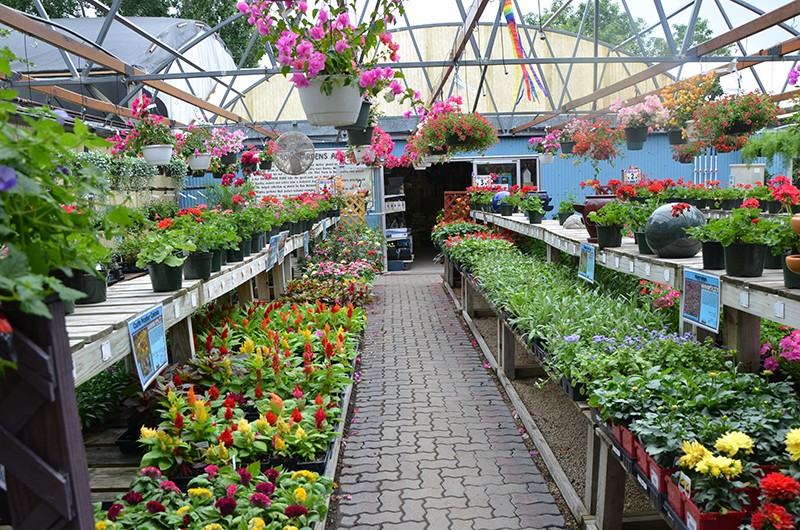Handling and care of plants after they have left their place of production is a difficult and challenging task for both big plant nurseries and small street flower stands alike. Whether a plant flourishes or not is the collective effort of the breeder, propagator, shipper, nursery retailer and the end customer combined. That is why proper nursery management is crucial.
If there is a weak link somewhere along the chain, the result will be frail, withering plants and unhappy customers, discouraged from repeat purchases. The bad news is that even the best plant nursery conditions will not be able to do much when plants exhibit poor growth or show signs of being susceptible to pests and diseases. It is imperative, however, that a few rules be strictly observed in order to give plants the best chance to grow and flourish. Find out detailed information at https://www.projectplants.com.au/ These rules pertain to light, temperature, air flow, fertilization and sanitation.
Keep Proper Temperature Levels
One of the things you should beware of the most, is high temperature on the nursery premises. Avoid displaying the plants in the full sun, especially on cement or asphalt surfaces, which absorb the heat and then radiate it upwards, causing a hazardous increase in root and leaf temperatures, drying up of the soil and overall plant weakness. This will result in high levels of ethylene and poor plant quality.
This shows how important it is to provide proper air movement and shelter from directed sunlight in order to protect the plants in a retail environment.
Provide Shade from Strong Direct Sunlight
No matter what the plant species are, in cases when temperatures rise up to 68 F or above, shading needs to be immediately provided in order to avoid damage. (You can read extensively about managing nursery temperature at http://horttech.ashspublications.org/content/13/4/617.full.pdf) This not only provides comfort to plants, but to the customers as well. Using a material that will decrease direct sunlight by about 50 % will do the job, as you don’t want to cut off all sunlight, either.
Late spring is a dangerous period which can surprise with abrupt rise of temperatures and sunlight, so this is the time when retailers need to be most careful not to delay measures by being accustomed to the cooler weather over the past months.
Sufficient Air Movement
Sufficient air movement can be achieved by the use ofoverhead fans, which will take care of ethylene buildup and temperature increase.
It is also crucial for a pleasant shopping experience and will ensure customers stick around long enough to leave the nursery with a few plants.
Beware of Ethylene

Ethylene is the growth regulator plant hormone which can have huge impact on plant state. It is active even in very low concentrations, making it imperative to keep strict control over its level in plant nurseries. It is really useful when plants are first produced in order to control growth, but once that phase is over it can have a devastating effect. Check out this article about best ethylene damage management practices in nurseries and greenhouses.
Premature loss of foliage or even plant death are the most obvious signs of high ethylene concentration in the air. It can come from car exhaust, plants under stress, cigarette smoke, fungi and bacteria, and often from fruits and vegetables as well, since they tend to produce more of it than the stem and leaves.
The way to reduce ethylene damage is by ensuring enough air flow and keeping plant areas clean, since dead plants are also a source of ethylene pollution. Ventillation and proper shading are going to have an immense effect.
Some plants, such as Geranium and Snapdragon are extremely sensitive to ethylene. Others, such as Begonias and Petunias are moderately afflicted, and a third group, like Calendula or Marigold, for example, do not suffer from the presence of ethylene. Irrespective of the plant species in a nursery, however, ethylene levels need to be kept in check.
Moisture and Sanitation
The busy season of spring poses a problem for the correct and sufficient watering of plants. Sometimes the lack of personnel results in attempts to quickly water a vast number of plants, resulting in insufficient or too much moisture, plant stress, leading to ethylene production, and an overly unpleasant experience which puts customers off by having to handle poorly looking plants, drowning in their pots.
Outside displays require even more care. Watering by hand, providing sufficient shade, and displaying ethylene-insensitive plants, especially on busy streets with lots of exhaust fumes coming from the passing vehicles would ensure the plants look good enough to present the nursery in a good light and attract more customers. You can find extensive tips on nursery sanitation at https://www.wikihow.com/Keep-Your-Plant-Nursery-Clean
Keeping plant areas clean should be top priority for any nursery or retail garden center. Watering, removing dead plants and withered leaves needs to be performed at least twice daily on a regular basis, especially during the busy months. Leaving the mess not only sends customers away but also increases ethylene levels and leads to more plant damage.

Fertilizing
The need for fertilizing depends on the type of plants and the expected period of time they will spend in the nursery. The types which are purchased relatively soon, such as bedding plants, do not require fertilization before they get to their intended places in customers’ gardens.
For other types, such as hanging baskets and planters, rain and water tend to wash away many of the soil substances and result in deficiencies which will affect the plant health and appearance. In these cases, the use of fertilizers is a must if we are to keep the plants from declining. Here you can find additional information on nursery plant fertilization rules.
Educating the Customer
An ignorant or poorly informed customer might ruin months of effort and destroy even the highest quality plants. Each plant should go together with adequate information about proper care steps, once it gets to its intended new home. This will enable the customer to successfully continue looking after their purchase.
And a happy customer often becomes repeat customer.







